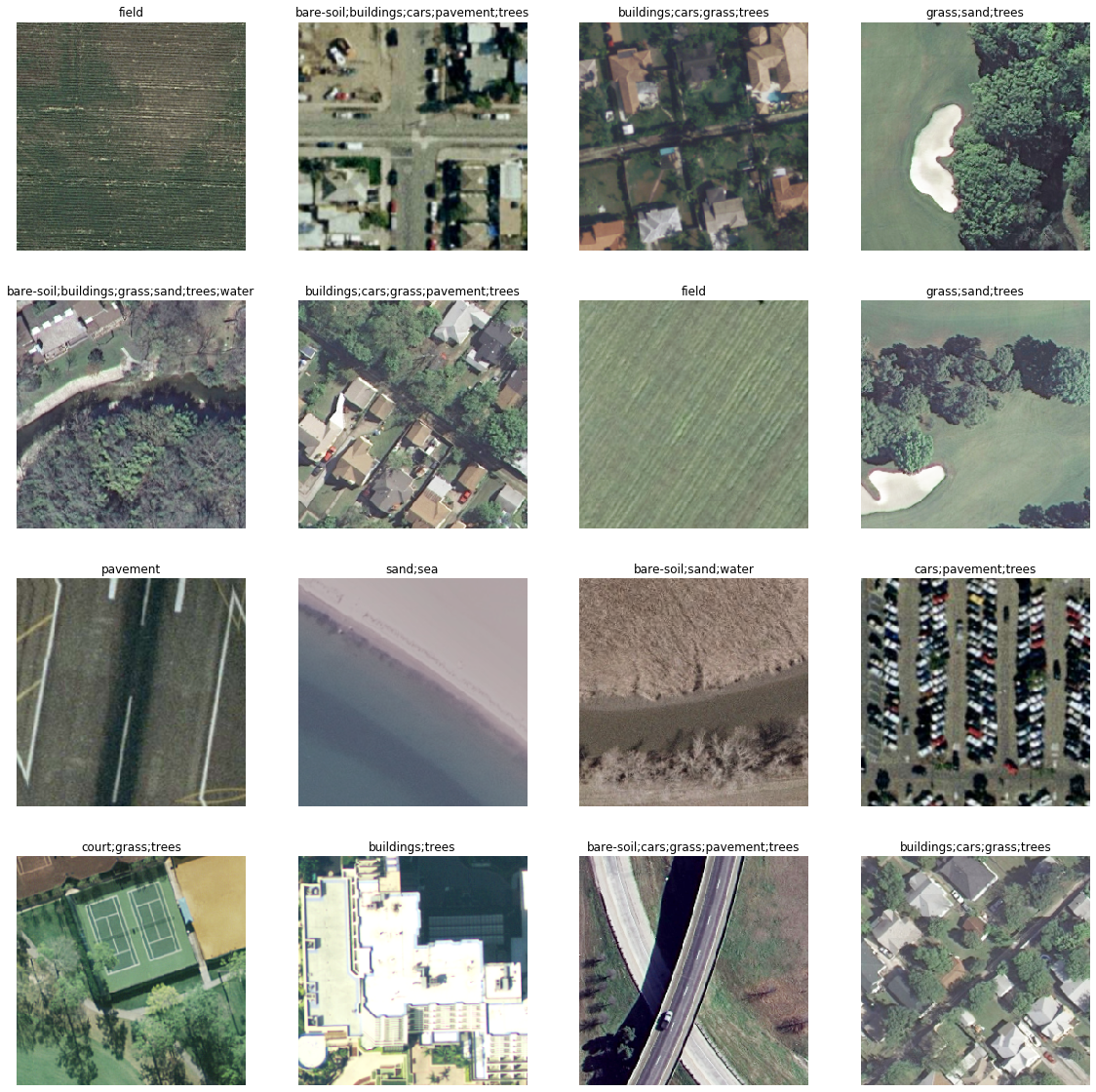Is Deep Learning Better For Multi Label Classification
Multi-label Land Embrace Nomenclature with Deep Learning
A step past step guide on Classifying Multi-label Land encompass classification using Deep Neural Networks

Multi-label land encompass classification is less explored compared to single-characterization classifications. In contrast, multi-label classifications are more realistic as nosotros always find out multiple state cover in each image. However, with the Deep learning applications and Convolutional Neural Networks, we tin can tackle the claiming of multilabel classifications.
In this tutorial, we use the redesigned Multi-label UC Merced dataset with 17 state cover classes. UC Merced Land apply dataset was initially introduced as one of the primeval satellite datasets for computer vision. The UC Merced dataset is considered as the MNIST of satellite image dataset. The original dataset consisted of 21 classes of unmarried-label nomenclature.
In the side by side section, we get the information and look into classes and class imbalances in the dataset. Next, we train our model using Deep Neural Networks, and finally, we test our model with external images for inference.
Getting Information
We can access the data directly in Jupyter Notebook/Google Colab using WGET bundle from the following URL.
!wget https://www.dropbox.com/due south/u83ae1efaah2w9o/UCMercedLanduse.zip !unzip UCMercedLanduse.naught
Once we get the data and unzip it, we are ready to explore it. Let us start with the labels. We read the labels with Pandas.
df = pd.read_csv("UCMerced/multilabels.txt", sep="\t") df.head()
And here are the first five rows of the labels. Every bit you tin meet, the data is in One-Hot Encoded format. Each Prototype has 17 labels where "0" ways the absence of that label in the particular image and "one" signals the presence of that label in the picture. In full, we accept 2100 images.

Before nosotros move on to classifying tasks using Neural Network and deep learning, we can look into the distribution of the classes in the dataset. Checking the distribution of the dataset is an important step to cheque for information imbalances in your dataset. Nosotros start create a new data frame to shop the classes and their counts.
# Create Class count dataframe
class_count = pd.DataFrame(df.sum(axis=0)).reset_index()
class_count.columns = ["course", "Count"]
class_count.drib(class_count.index[0], inplace=Truthful) # Visualize course distribution every bit Barchartfig, ax= plt.subplots(figsize=(12,10))
sns.barplot(y="class", x="Count", information=class_count, ax=ax);
The following visualisation indicates the grade imbalances in the dataset. We have pavement class with over 1200 image while Airplane class accept 100 images.

In the next section, we start preparation the dataset with Fastai library. Fastai is a convenient library congenital on acme of Pytorch which offers a lot of like shooting fish in a barrel to use functionalities.
Training
We need to get the data prepared for the training. Our data labels are in One-Hot Encoded format, and I assumed that would be challenging. Luckily with a piffling bit of browsing the Fastai Forum, I plant out that at that place is a native part in Fastai for multiple-labels with Ane-hot encoding format. We need to laissez passer the column names when we are labelling the dataset and also indicate that the data is multicategory dataset.
path = Path("UCMerced") data_src = (ImageList.from_df(df=df, path=path, folder='images', suffix=".tif")
.split_by_rand_pct(0.2)
.label_from_df(cols=list(class_count['class']), label_cls=MultiCategoryList, one_hot=True))
In one case we create the data source, nosotros can pass information technology through the data bunch API in Fastai. We also perform some data augmentations.
tfms = get_transforms(flip_vert=True, max_lighting=0.1, max_zoom=1.05, max_warp=0.) data = (data_src.transform(tfms, size=256).databunch().normalize(imagenet_stats)) data.show_batch(4)
Here are some random images with their labels visualised with Fastai.

Side by side, we create a learner where we pass the data bunch we created, the option of the model (in this case, we use resnet34) and metrics ( accuracy_thresh and F Score).
f_score = partial(fbeta, thresh=0.45) learn = cnn_learner(data, models.resnet34, metrics=[accuracy_thresh, f_score], callback_fns=[CSVLogger,ShowGraph, SaveModelCallback])
We can besides get the learning charge per unit suitable for preparation the dataset by plotting with lr_find in Fastai.
larn.lr_find() learn.recorder.plot()
At present, nosotros tin can start training our model with the data. We use the fit_one_cycle function, which is powerful and incorporates state of the fine art techniques using 1 cycle technique.
larn.fit_one_cycle(5, 1e-2) Once the grooming starts, Fastai displays the metrics provided with the preparation and validation loss and time for each epoch

Our final epoch records a 95.53 accuracy threshold and F Score of 90.84 which is considerably accurate with just five epochs. We tin can train further and amend our metrics. To do so, we can freeze some layers and train others from scratch.
acquire.freeze()
lr = 1e-3 learn.fit_one_cycle(five, slice(lr))
Our final model scores 91.39 F Score, which is a trivial chip of improvement compared to the previous preparation. We could railroad train more by using more epochs or increasing the architecture of the deep neural network. You tin try that and run into if it helps improve the model. In the next section, we will apply external images as an inference to the model.
Prediction of different dataset
To test the model, we predict several images from an external source and meet how the model performs.
!wget https://www.dropbox.com/southward/6tt0t61uq2w1n3s/examination.null !unzip exam.zip img = open_image("/content/test/roundabout_086.jpg") img
The showtime image from the test dataset is shown below.

Let us see what the model predicts:
MultiCategory blank-soil;buildings;cars;grass;pavement Well, that is what the model produces, and I think it is accurate from the classes we used in our training dataset. Our prediction has predicted virtually classes present in the prototype (at least from what I tin see in my optics).
Permit u.s.a. examination with another image.

And the model predicts
MultiCategory plane;cars;pavement Airplane and pavement, yes, simply I do non encounter whatever cars.
Determination
In this tutorial, nosotros trained a multi-label category classification model using Deep Neural Networks. We also carried out inferences of the model with other images.
The code and Google Colab Notebook for this tutorial is available in this Github Repository.
Yous can admission Google Colab Notebook straight in this link
Source: https://towardsdatascience.com/multi-label-land-cover-classification-with-deep-learning-d39ce2944a3d
Posted by: sandbergmudis1966.blogspot.com


0 Response to "Is Deep Learning Better For Multi Label Classification"
Post a Comment